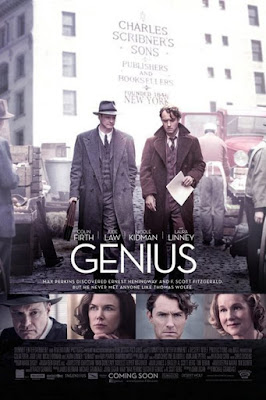This was a
year of being nagged at by lots of little annoyances, mostly health-related, as
well as the year one of my best friends, Ed Gorman, passed away. I still
halfway expect to get an email from Ed promising me another Maserati is on the
way in appreciation for something I did for him, when in truth Ed did more to
help me than I ever did for him. More than a hundred Maseratis could ever pay
back.
But not to
dwell on the bad, 2016 was also a year in which a lot of good things happened.
Bill Crider won the Sidewise Award for a
story I published in TALES FROM THE OTHERVERSE, and one of my stories was a
finalist for the same award. I read a bunch of good books and watched a bunch
of good movies and TV shows. I attended my first ice hockey games and
discovered that I'm a hockey fan. (Actually, now that I think about it, it may
have been right at the end of 2015 when I went to my first game, but it was
this year I became a real fan. I even know what icing is!) The world is still a good place
and I intend to enjoy it.
Writing
I topped a million words again this year, for the 12th straight year. I just take it year to year and don't know how much I'll get done in 2017, but based on the contracts I have, I should be in the neighborhood of a million words again. This year it broke down to ten novels, five more novels written in collaboration, and two novellas, both of which will have my name on them when they're published next year. I had a really good first half of the year, then slowed down some in the second half, largely due to my eye problems. Those seem to be under control for now, so I'm optimistic about my production for next year.
Reading
Here are my top ten favorite books I read in 2016, in alphabetical order by author, as usual.
SINNER MAN, Lawrence Block
Writing
I topped a million words again this year, for the 12th straight year. I just take it year to year and don't know how much I'll get done in 2017, but based on the contracts I have, I should be in the neighborhood of a million words again. This year it broke down to ten novels, five more novels written in collaboration, and two novellas, both of which will have my name on them when they're published next year. I had a really good first half of the year, then slowed down some in the second half, largely due to my eye problems. Those seem to be under control for now, so I'm optimistic about my production for next year.
Reading
Here are my top ten favorite books I read in 2016, in alphabetical order by author, as usual.
SINNER MAN, Lawrence Block
THE SAVAGE
PACK, Fred Blosser
ANGEL'S
FLIGHT, Lou Cameron
PISTOL
PASSPORT, Eugene Cunningham
A HANDFUL OF
HELL, Robert F. Dorr
THE MAN FROM
NOWHERE, T.T. Flynn
THE KNIFE
SLIPPED, A.A. Fair (Erle Stanley Gardner)
POWDER
SMOKE, William Colt MacDonald
MY FATHER,
THE PORNOGRAPHER, Chris Offutt
NIGHTRIDER
DEPUTY, Ralph R. Perry
Two that almost made the list are SOME BURIED CAESAR by Rex Stout and A GENT FROM BEAR CREEK by Robert E. Howard. I dropped them off because they were rereads. I also debated with myself whether to include Fred Blosser's THE SAVAGE PACK since I published it, but finally I decided to put it on there because I think it's a great frontier adventure novel. I think I blogged about all of these except the Offutt book, which is fascinating and disturbing and very well-written, and Lou Cameron's ANGEL'S FLIGHT, which I'll be posting about probably next week. I'll say this, though, as a teaser: it's the best book I read in 2016. My reading this year was dominated by Westerns, and pulp Westerns, at that. That should come as no surprise to anyone. I read 111 books in all, down quite a bit from last year's 125. I don't make New Year's Resolutions, but I am going to try to read more next year. Seems like I always say that. We'll see.
So I'll close with a quote from my favorite philosopher (bet you didn't know I have a favorite philosopher), Marcus Aurelius: "When you arise in the morning, think of what a precious privilege it is to be alive—to breathe, to think, to enjoy, to love." Have a great 2017, everyone.


























